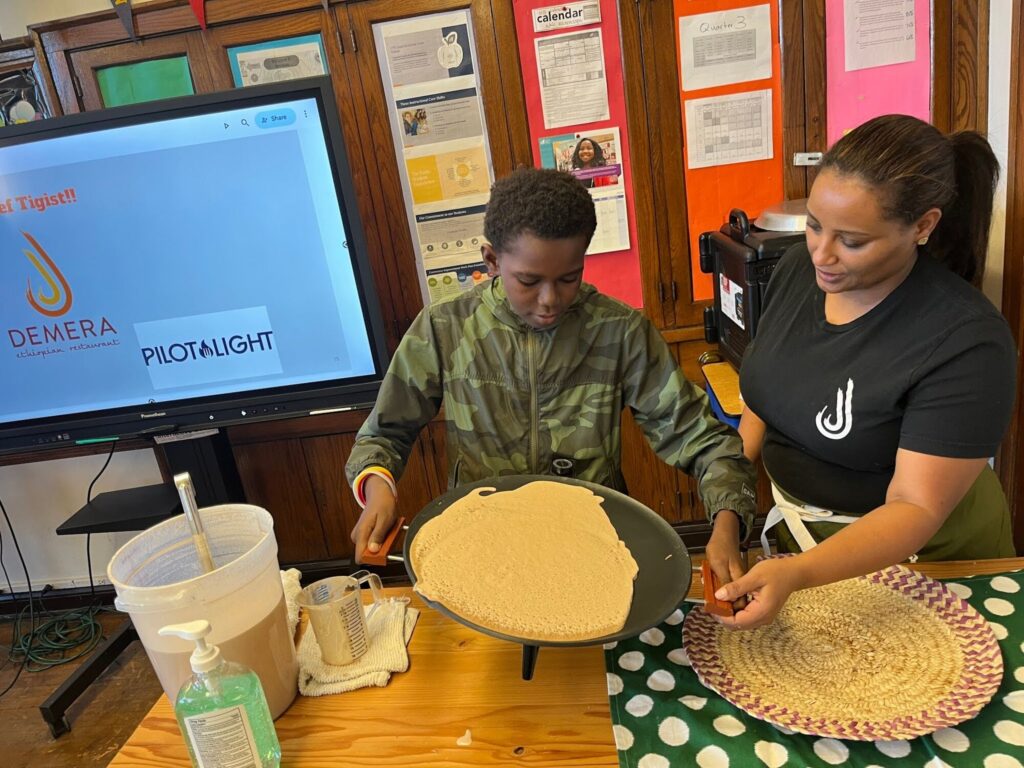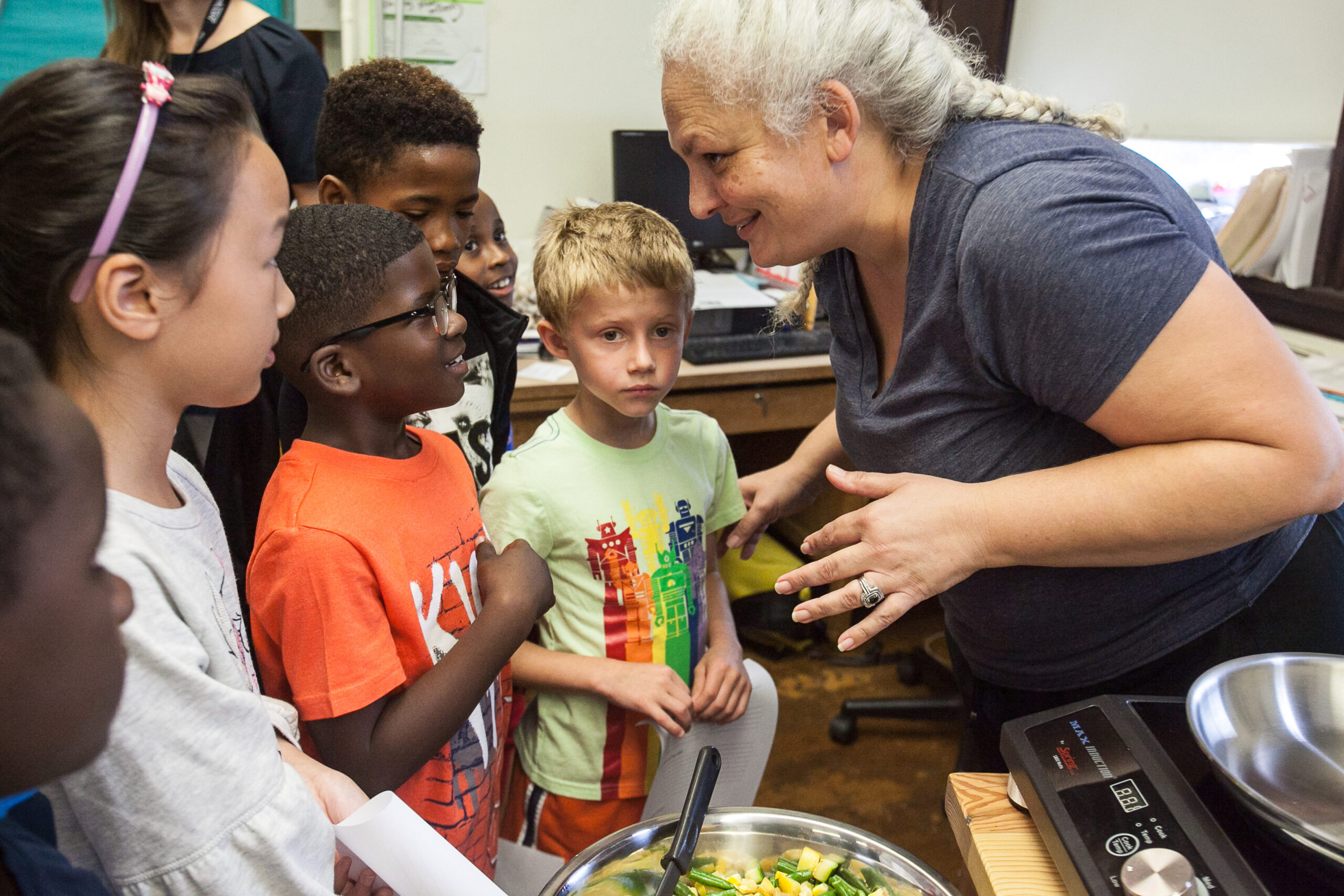Food connects us to each other is one of the most essential truths of the human experience.
This Standard Means
- People from all cultures and backgrounds are connected by their shared experiences around food.
- By sharing food with others, we connect as humans and learn more about one another’s experiences and identities.
- Food is a universal language that provides common ground in order to build an inclusive community.
- Students who demonstrate understanding can articulate that people from all cultures and backgrounds are connected by their use of food.
- We are connected to each other when we try different foods together.
- Different people have different food preferences.
- We can discuss the similarities and differences in our food preferences using respectful language.

FES 1 In Action
Chicago Chef Tigist of Demera Ethiopian Restaurant visited students in Mr. Albrecht’s 7th grade classroom to share about her experience as an Ethiopian chef in Chicago. Students learned about how food connects to our identities and sense of place while also learning to make injera.
How to Bring FES 1 to Your Students
Try these examples of real-world community experiences with your students aged K-12 to help them understand the importance of FES 1 in their daily lives!
- Participate in food sampling from different cultures and regions of the world.
- Invite community members to share cultural dishes with students, encouraging students to use their senses to fully experience the food and its cultural story.
- Compare menus from different restaurants, noting common ingredients across cultures.
- Visit the school cafeteria to learn about cafeteria processes and make connections with school cafeteria staff members.
- Explore a local market, grocery store, or restaurant to learn about foods from different cultures and support community connections.
- Bring in community members (local chefs, restaurant/market owners, etc.) to discuss important dishes and recipes from their cultural backgrounds.
- Participate in community discussions that compare and contrast how different foods are used to celebrate holidays, birthdays, and family gatherings.
- Plan a visit to cultural landmarks/museums to explore the importance of different foods across cultures, and allow students to document their experiences through photos, videos, etc.
- Host a community meal in which students prepare a dish to share, and create infographics on the recipe, the culture from which the recipe derives, and the geographic and historical origins of each ingredient.
- Build a class cookbook, bringing together recipes from students’ backgrounds to foster community through food.
- Participate in a virtual field trip to explore local food traditions around the world.
- Record podcasts (or other recording format) to interview community members, neighbors, or family members offering oral histories of family/cultural foods, meals, and/or recipes.
Grade-Specific Competencies
- I can name a food I like to eat.
- I can name a food I don’t like to eat.
Play-Based Activities
- Dramatic play: Set up an area for playing family, incorporate “family meals”
- Create art featuring student names combined with foods they like
- Discuss food together in the cafeteria
- Share feelings/opinions about the different foods offered in school lunch
- Make the school cafeteria in the block area
- Describe, classify, or rate different foods at snack time
- Vote and chart favorite fruits, favorite vegetables, etc.
- Encourage family and cultural shares/connections with food
- Use your morning message to ask questions about food preferences
- Incorporate games, songs, and chants about food
- Bake or cook something as a class (muffins, salad, smoothies!)
- Encourage sorting of dramatic play foods:
- Foods I like/foods I don’t like
- Foods I have tried/foods I haven’t tried
Grade-Specific Competencies
- I can name a food that my family eats often:
- Why is it important to me/my family?
- How does it make me feel?
- I want to know about foods that are important to other people.
Grade-Specific Competencies
- I can talk about a personal food memory:
- How is this memory related to my identity?
- Why is this story important to me?
- I understand that food is important to all people.
- How does food bring people together?
Grade-Specific Competencies
- I want to know how a specific food item (ex: rice, noodles, bread) is used in different cultures around the world.
- I recognize that food has cultural and religious significance to people around the world.
Grade-Specific Competencies
- I am curious and want to know more about how recipes can showcase different traditions, cultures, and stories.
- I can talk about foods used within various cultural realms and draw connections to individual lived experience.

